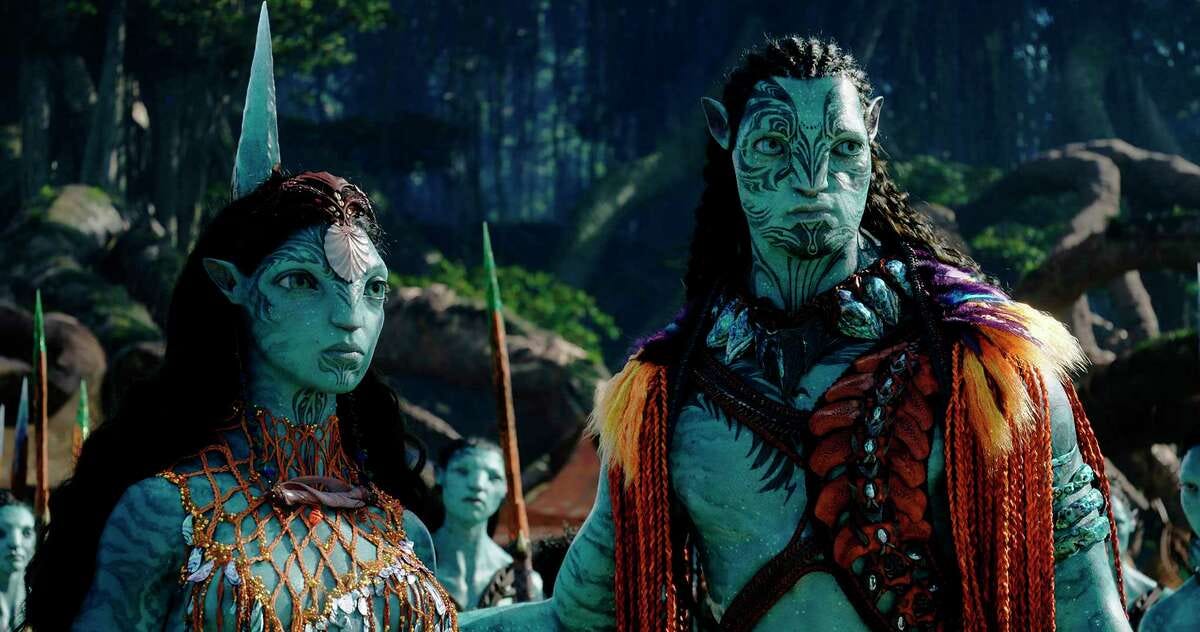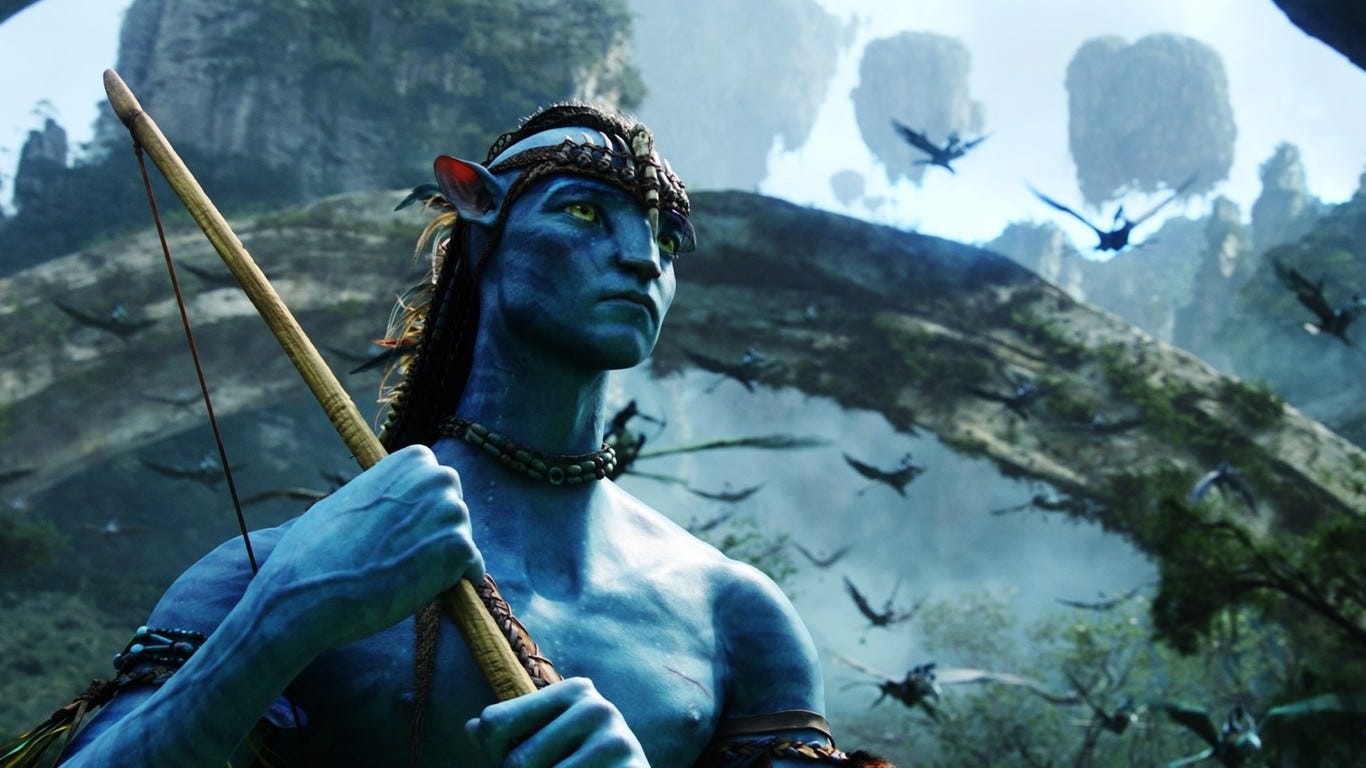Another Take - Avatar: The Way of Water
Adam Aasen provides another perspective on James Cameron's passion project and why we shouldn't lose our childlike wonder when it comes to movies
“If you set your goals ridiculously high and it's a failure, you will fail above everyone else's success.”
James Cameron
The sequel to 2009’s “Avatar” was always going to be a difficult task. We’re talking about a movie that broke box office records and was nominated for nine Oscars (winning three). Some might not agree, but it’s often thought of as the biggest breakthrough in cinema since “The Jazz Singer.” New technology. New techniques. All thanks to the ingenuity of James Cameron, the fearless director — often arrogant, but never lazy or boring. So many movies filled with motion-capture technology (think of any Marvel movie) owe a huge gratitude to Cameron, who took the technology from its infancy (“The Lord of the Rings,” “Harry Potter,” “The Polar Express”) to realistic, emotional performances.
“Avatar” was one of the first movies to demand in-theater viewings using IMAX and 3D and while some directors have utilized these advancements (Christopher Nolan for IMAX and Martin Scorcese and Alphonso Cuaron for 3D), nobody has matched Cameron’s utilization of these formats.
So, 13 years after the first movie came out, is it even possible for Cameron to live up to expectations with the sequel?
In my mind, he exceeded them.
The motion-capture technology looks a million times better than the first. The 3D effects remain top-notch, creating a subtle, immersive world you can throw yourself into. The story — while still the weakest part of Cameron’s franchise — is an improvement over the first movie. By simplifying the plot and removing unneeded characters or subplots, we can slowly and patiently explore the richly designed world of Pandora. And what a world it is.
"Movie Magic”
In the 2022 film, “The Fabelmans,” legendary director Steven Spielberg describes the moments where the magic of movies took hold of his life. Watching a train wreck in “The Greatest Show on Earth” scared the young protagonist as he thought the locomotive was veering into the audience. It’s an experience shared by many during those magical early days of cinema.
On Jan. 25, 1896, the Lumière brothers screened their short film "L'Arrivée d'un Train en Gare de La Ciotat" ("Arrival of a Train at La Ciotat Station") at the Salon Indien du Grand Café in Paris. It wasn't the very first showing of a film, but close enough -- the Lumières screened 10 similar shorts just a month earlier.
There were only a handful of people in the world who had seen a movie at this point, and it was probably the first time for everyone in this particular audience. And, so the story goes, they did not take it sitting down. On the contrary, they broke into a panic, screaming and running for their lives as the locomotive on the screen seemingly headed straight toward them.
The same magic is lauded again and again, in pictures like “Cinema Paradisio,” “Hugo” and more.
Somehow, we’ve lost that sense of wonder.
We’re desensitized to movie magic. We’ve seen dinosaurs and aliens and wizards, all brought to life on screens big and small (some as small as a cell phone).
“Avatar” rekindled that magic, but, for some reason, it became popular to crap on it. It was the highest grossing movie of all time — with an entire section of a Disney theme park to boot — but you were hard pressed to find someone who claimed to be a big fan of the movie. How can that be?
The sequel boasts an 82 percent score on Rotten Tomatoes, which shows that most people like it, but that 18 percent percent against is brutal, saying it’s one of Cameron’s worst movies and a massive disappointment. One critic called it a “bad, big, shiny mess” and their entitled to their opinion but honestly this could be a victim of expectation rather than anything else.
The Pros:
You’ve probably read other reviews about the newest entry into the “Avatar” franchise so I won’t bore you with too much of a plot summary, but basically Jake Sully and his children relocate to another part of Pandora, settle in with a tribe of reef-dwelling Na’vi, explore the amazing ocean and fend off a new threat from humans still trying to colonize the planet. That’s basically the plot. It’s a little thin, but I don’t think that’s the biggest problem. A simpler plot allows the viewers to view in on themes and atmosphere and absorb the storytelling instead of struggling to follow it. Simple can be good.
What we’re left with is eye candy of the highest order. I sat in amazement at the visuals on the screen and the expert world-building, maybe not on par with “Lord of the Rings,” “Star Wars” or “Harry Potter,” but pretty damn amazing. Pandora feels like a real place.
I watch a lot of movies and, as a result, I get bored seeing the same movie over and over again. I am growing weary of Marvel movies as a result and I’ve never been into cliché Hallmark movies or cookie-cutter action films. I want to see something I’ve never seen before and so, usually, my antidote is weird, artsy, experimental art films. Big budget movies rarely take risk. That is, unless it’s directed by James Cameron.
Cameron isn’t afraid to spend hundreds of millions of dollars and years of effort to create something new and different for the big screen. In that sense, he succeeds. Visually, I’ve never seen anything like “Avatar: The Way of Water.” It stands alone when it comes to special effects (CGI, motion capture, 3D).
Frankly, it wowed me.
You can like both artsy A24 movies and like “Avatar: The Way of Water.” It’s not an either/or. I certainly love both, for similar reasons: they aren’t like everything else.
The Cons:
“The length of a film should be directly related to the endurance of the human bladder.”
― Alfred Hitchcock
This is a loooooong movie. I don’t regret seeing it, but it tried my patience. That’s probably why so many have criticized the thin plot and underdeveloped characters. At nearly three and half hours, it doesn’t necessarily warrant this run time, except the fact that Cameron wants to give you your money’s worth.
Some plot points simply don’t make sense. A villain returns suspiciously and then begins an attack for purely personal reasons. Sully uproots his family very quickly and without much discussion, even though it only makes his children safe for a very brief period of time.
As is common with James Cameron, the dialogue is clunky. He’s never been a great writer and he delegates his screenplay to a rather large team of hired hands.
I won’t be quoting lines from “Avatar: The Way of Water.” I’m not sure it speaks to any larger truth. I don’t think any dialogue or plot moved me emotionally. Story-wise, it felt unfinished with most of the resolution saved for the third installment.
“Writing a screenplay, for me, is like juggling. It's like, how many balls can you get in the air at once? All those ideas have to float out there to a certain point, and then they'll crystallize into a pattern.”
James Cameron
Yet, I’ll defend the unoriginality of the “Avatar” franchise. People criticize it for having a story similar to “Fern Gully,” “Dances With Wolves” or “Pocahontas,” but nobody ever really criticizes “Star Wars” for ripping off “Seven Samurai,” “Cars” for ripping off “Doc Hollywood,” or “Friday the 13th” for ripping off “Halloween.”
Some stories tell a “classic tale” that’s been told over and over again. Sometimes it’s an allegory. Sometimes it’s just lazy screenwriting but it’s just movies.
The lazy, unoriginal plot would be a problem if the “Avatar” franchise has nothing else to offer, but it offers visual spectacle. Why is it that a thinly plotted arthouse film (I’m thinking of “Nomadland” which I love, or nearly any Terence Malick film) can be praised for mostly its visuals and sound, calling it a “painting on the screen,” but big budget movies can’t earn the same leeway?
“Stoytelling is storytelling. You still play by the same narrative rules. The technology is completely different. I don't use one piece of technology that I used when I started directing.”
James Cameron
In the end, you shouldn’t judge a movie with your brain, but rather with your heart. It’s not all about what it made you think, but what did it make you feel? Did it invoke emotion? Did it take you to another place you haven’t been? Did you wonder at the screen? Could you forget about the world for a few hours?
“Avatar: The Way of Water” made me feel like I did as a child looking at a movie screen and, for me, that’s more than enough.









